From Craftsmanship to Carvings: Exploring the Key Elements of Georgian Furniture Identification
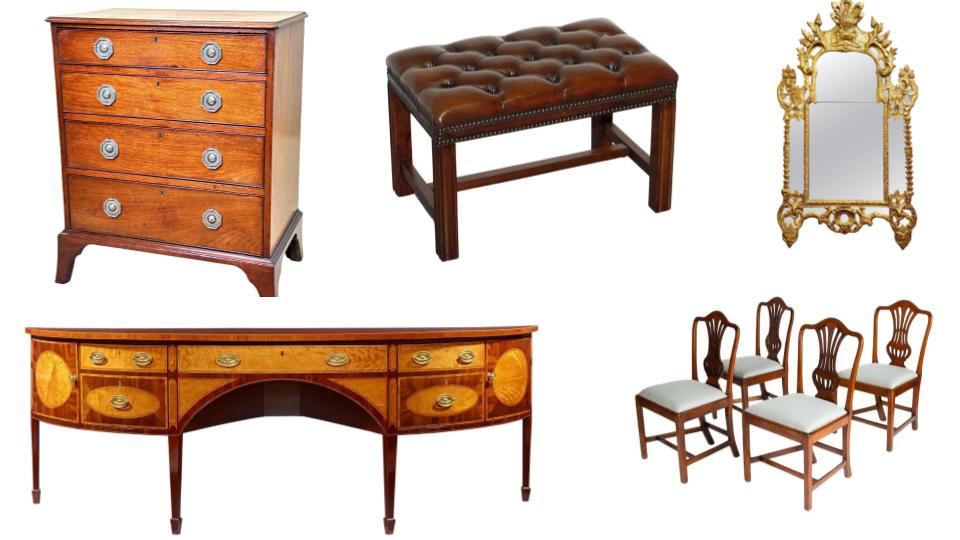
Georgian furniture is a term that refers to the style of furniture that was produced in Britain during the reigns of the first four Georges, from 1714 to 1830.
It is a diverse and elegant style that reflects the tastes and influences of the time, ranging from Rococo to Gothic, Neoclassical to Oriental. Georgian furniture is highly sought after by collectors and enthusiasts for its quality, craftsmanship, and beauty.
But how can you tell if a piece of furniture is truly Georgian or not? Here are some tips to help you identify Georgian furniture and appreciate its features.
What are the dates for Georgian furniture?
Georgian furniture covers a long period of time, from 1714 to 1830, which can be divided into three sub-periods: Early Georgian (1714-1760), Mid-Georgian (1760-1790) and Late Georgian (1790-1830). Each sub-period has its own distinctive features and influences that reflect the social, political and cultural changes of the era.
Early Georgian (1714-1760)
The Early Georgian Era includes the Rococo and Neoclassical movements under the reigns of King George I and II. The furniture was smaller in scale with carved embellishments. New exotic woods arrived from the colonies. Chinoiserie motifs reflected an interest in Asian cultures. Light, elegant carved furnishings for socializing emerged over heavier late Baroque styles.
Key Traits:
- Smaller, more intimate proportions suited to socializing in parlors and drawing rooms
- Asymmetrical shapes and whimsical curves inspired by the Rococo style
- Oriental and Chinoiserie influences borrowed from increased trade with Asia
- Use of exotic imported woods like maple, walnut, and mahogany instead of traditional English oak
- Cabriole legs featuring curved, Queen Anne shapes often with scroll feet
- Intricate carvings of shells, leaves, C-curves, and other natural motifs
- Marquetry veneers utilizing contrasting woods to create patterns
- Lacquered finishes imitating Asian design
- Boullework using brass, pewter or tortoiseshell inlay
- Chair splat backs and camel back profiles
- Distinct feet shapes like pad, ball and claw, ogee
- Porcelain, china, delftware and lacquered furnishings like tea caddies
Middle Georgian (1760-1780)
The Middle Georgian period under King George III moved away from the excess of Rococo to Neoclassical order. Heavily carved embellishments got replaced with straight lines informed by Greek and Roman architecture. Mahogany became the wood of choice. Furniture had more geometric shapes but still expressed refined sophistication.
Key Traits:
- Symmetrical forms and classically inspired shapes
- Restrained decorative motifs like columns, rosettes, swags and urns
- Mahogany used structurally across entire pieces, not just as veneers
- Rectilinear shapes with right, measured angles
- Straight, tapered legs replace cabriole, Queen Anne curved legs
- Sharp geometric banding outlining edges and legs as decoration
- Marble or mahogany tops on tables, desks and chests
- Understated brass fretwork accents
- Ring turned, reeded or fluted legs
- Dining chairs with heart-shaped splat backs or shields
- Ball and claw feet, trumpet-shaped legs
Late Georgian (1780-1830s)
Under King George IV, the Late Georgian era saw French influences via the Neoclassical Empire style. Furniture became larger in scale again with dramatic shapes. Mahogany continued as the prime wood along with other exotic imports. Elaborate brass or gilt metal mounts accentuated angular furniture forms.
Key Traits:
- Larger, grand proportions return
- Ornate classical motifs like urns, swans, acanthus leaves
- Brass and ormolu mounts serve as embellishments
- Claw and ball feet, other animal motifs on legs
- Gilding, ormolu and bronze ornamentation techniques
- Caned or leather upholstery on chairs and sofas
- Mahogany veneers over secondary woods like oak
- Roll-top cylinder desks emerge for residential use
- Large linen press cabinets used for storing linens
- Campaign furniture for travel with fold-out parts
- Architectural details like pediments, saber legs, pilasters
Related articles:
- How To Identify Mid-Century Modern Furniture
- How To Value Mid-Century Modern Furniture
- 15 Best Vintage American Furniture Brands
Identifying Georgian Furniture: Key Features
- Construction and Materials: Georgian furniture was crafted using high-quality materials, such as solid woods like mahogany, walnut, and oak. Look for signs of craftsmanship, such as dovetail joints, hand-carved details, and sturdy construction. The presence of rich patina, a natural aging process that enhances the wood’s beauty, is often an indication of authenticity.
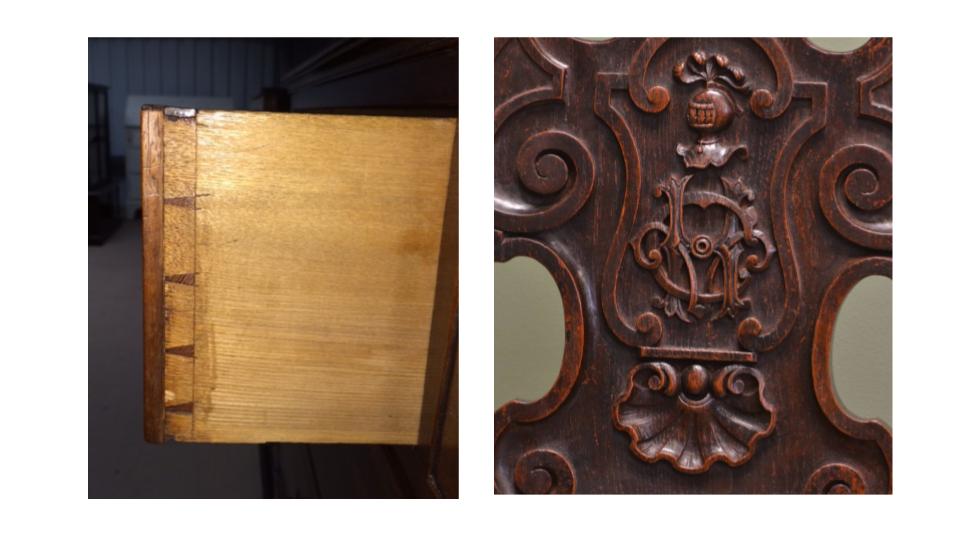
- Symmetry and Proportions: Georgian furniture follows a symmetrical design approach, with balanced proportions and harmonious lines. Look for equal spacing of drawers, consistent patterns, and matching decorative elements on both sides. The overall shape of Georgian furniture tends to be graceful and well-balanced, exuding a sense of refined elegance.
- Ornamentation and Decorative Motifs: Georgian furniture features intricate ornamentation and decorative motifs. Pay attention to carved details, such as acanthus leaves, rosettes, shells, and classical motifs like urns or swags. These embellishments were often inspired by Greco-Roman architecture and reflected the neoclassical influence of the time.
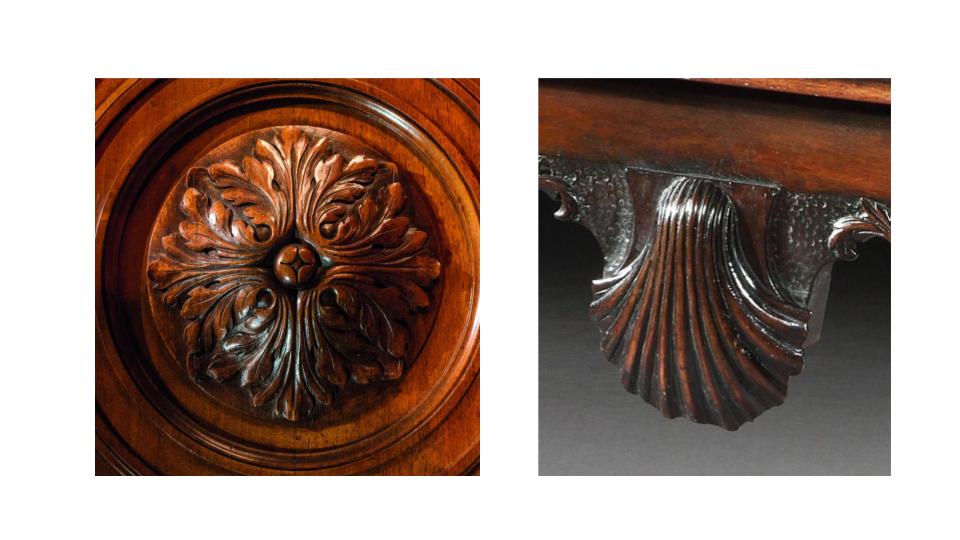
- Feet and Legs: The legs of Georgian furniture are noteworthy for their distinct styles. Look for cabriole legs, which curve outward and then inward, ending in an ornamental foot. Other leg styles include straight, tapered, and ball-and-claw feet. These leg designs contribute to the overall character and authenticity of Georgian furniture.
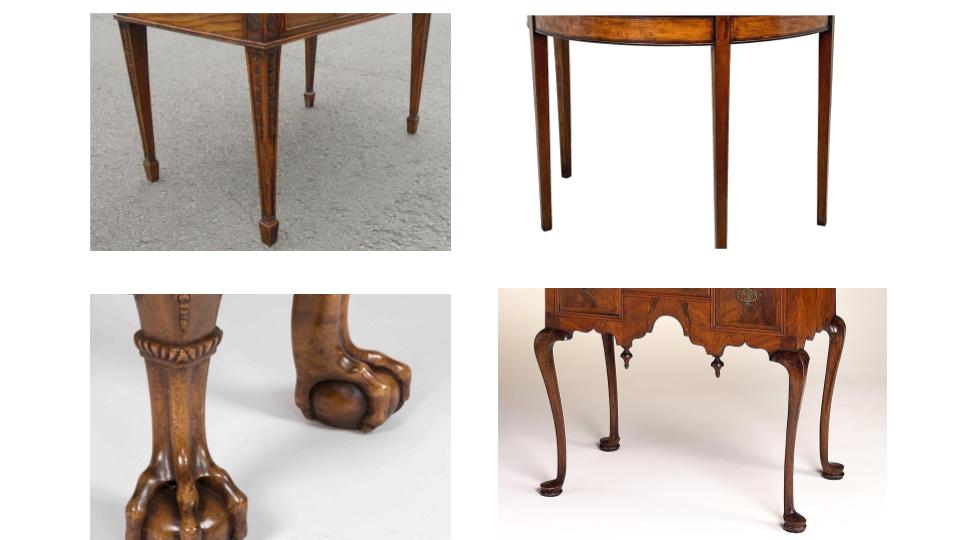
- Hardware and Fittings: Examine the hardware and fittings of Georgian furniture. Original pieces often feature brass or silver hardware, including handles, escutcheons, and keyhole surrounds. The craftsmanship and quality of these details can provide valuable clues about the authenticity and age of the furniture.
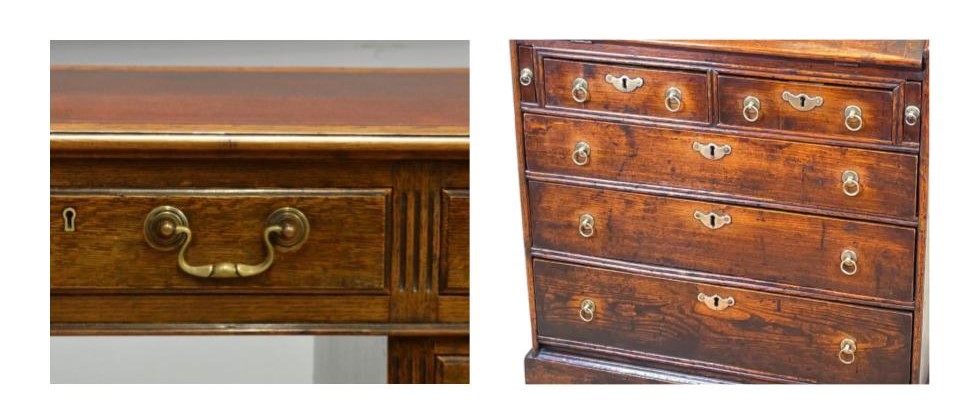
With its timeless beauty and exceptional craftsmanship, Georgian furniture continues to captivate antique enthusiasts and interior design aficionados. By understanding the key features and elements that define Georgian furniture, you can confidently identify and appreciate these remarkable pieces.
Remember to examine the construction, materials, symmetry, ornamentation, legs, and hardware when evaluating Georgian furniture. With practice and knowledge, you’ll soon develop an expert eye for identifying and appreciating the allure of Georgian furniture. Happy hunting for your next Georgian treasure!

